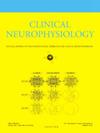Phasic events, cyclic alternating pattern (CAP) and sleep disorders
IF 3.6
3区 医学
Q1 CLINICAL NEUROLOGY
引用次数: 0
Abstract
Intermittent alpha rhythm, transient vertex sharp potentials, K-complexes, spindles, arousals, delta bursts, polyphasic bursts, sawtooth waves, muscle twitches, slow and rapid eye movements are distinct phasic events that occur throughout different sleep stages. During NREM sleep, arousal-related phasic events tend to aggregate into the ordered sequences of cyclic alternating pattern (CAP), which keeps the sleeping brain under control and provides a continuous balance between the programming centers (order) and the contingent psychological, organic and environmental factors (chaos). Due to its functional properties, CAP translates a condition of criticality and undergoes specific alterations in most sleep pathologies. The clinical applications of CAP are explored in sleep apnea syndrome, insomnia, narcolepsy, epilepsy, NREM and REM sleep parasomnias, as well as the involvement of CAP in cognitive processes and in critical care settings. During NREM sleep, the locus coeruleus (LC) exhibits infra-slow oscillatory activity with a periodicity that partially overlaps with that of CAP, suggesting a functional interaction between LC-driven noradrenergic rhythms and CAP dynamics. Through the structured collection of phasic events, CAP regulates sleep continuity, modulates responsiveness to internal and external stimuli and plays a coordinated activity in NREM sleep oscillations.
相事件,循环交替模式(CAP)和睡眠障碍。
间歇性α节律、瞬态顶点尖电位、k复合体、纺锤波、觉醒、三角洲爆发、多相爆发、锯齿波、肌肉抽搐、慢速和快速眼动是发生在不同睡眠阶段的不同相事件。在非快速眼动睡眠期间,觉醒相关的相位事件倾向于聚集成循环交替模式(CAP)的有序序列,这使睡眠中的大脑处于控制之下,并在编程中心(有序)和偶然的心理、有机和环境因素(混乱)之间提供持续的平衡。由于其功能特性,CAP在大多数睡眠病理中翻译了一种临界状态并经历了特定的改变。探讨了CAP在睡眠呼吸暂停综合征、失眠、发作性睡病、癫痫、非快速眼动和快速眼动睡眠异常中的临床应用,以及CAP在认知过程和重症监护环境中的参与。在非快速眼动睡眠期间,蓝斑(LC)表现出与CAP部分重叠的周期性次慢振荡活动,表明LC驱动的去肾上腺素能节律与CAP动力学之间存在功能相互作用。通过阶段性事件的结构化收集,CAP调节睡眠连续性,调节对内外刺激的反应,并在NREM睡眠振荡中起协调活动。
本文章由计算机程序翻译,如有差异,请以英文原文为准。
求助全文
约1分钟内获得全文
求助全文
来源期刊

Clinical Neurophysiology
医学-临床神经学
CiteScore
8.70
自引率
6.40%
发文量
932
审稿时长
59 days
期刊介绍:
As of January 1999, The journal Electroencephalography and Clinical Neurophysiology, and its two sections Electromyography and Motor Control and Evoked Potentials have amalgamated to become this journal - Clinical Neurophysiology.
Clinical Neurophysiology is the official journal of the International Federation of Clinical Neurophysiology, the Brazilian Society of Clinical Neurophysiology, the Czech Society of Clinical Neurophysiology, the Italian Clinical Neurophysiology Society and the International Society of Intraoperative Neurophysiology.The journal is dedicated to fostering research and disseminating information on all aspects of both normal and abnormal functioning of the nervous system. The key aim of the publication is to disseminate scholarly reports on the pathophysiology underlying diseases of the central and peripheral nervous system of human patients. Clinical trials that use neurophysiological measures to document change are encouraged, as are manuscripts reporting data on integrated neuroimaging of central nervous function including, but not limited to, functional MRI, MEG, EEG, PET and other neuroimaging modalities.
 求助内容:
求助内容: 应助结果提醒方式:
应助结果提醒方式:


